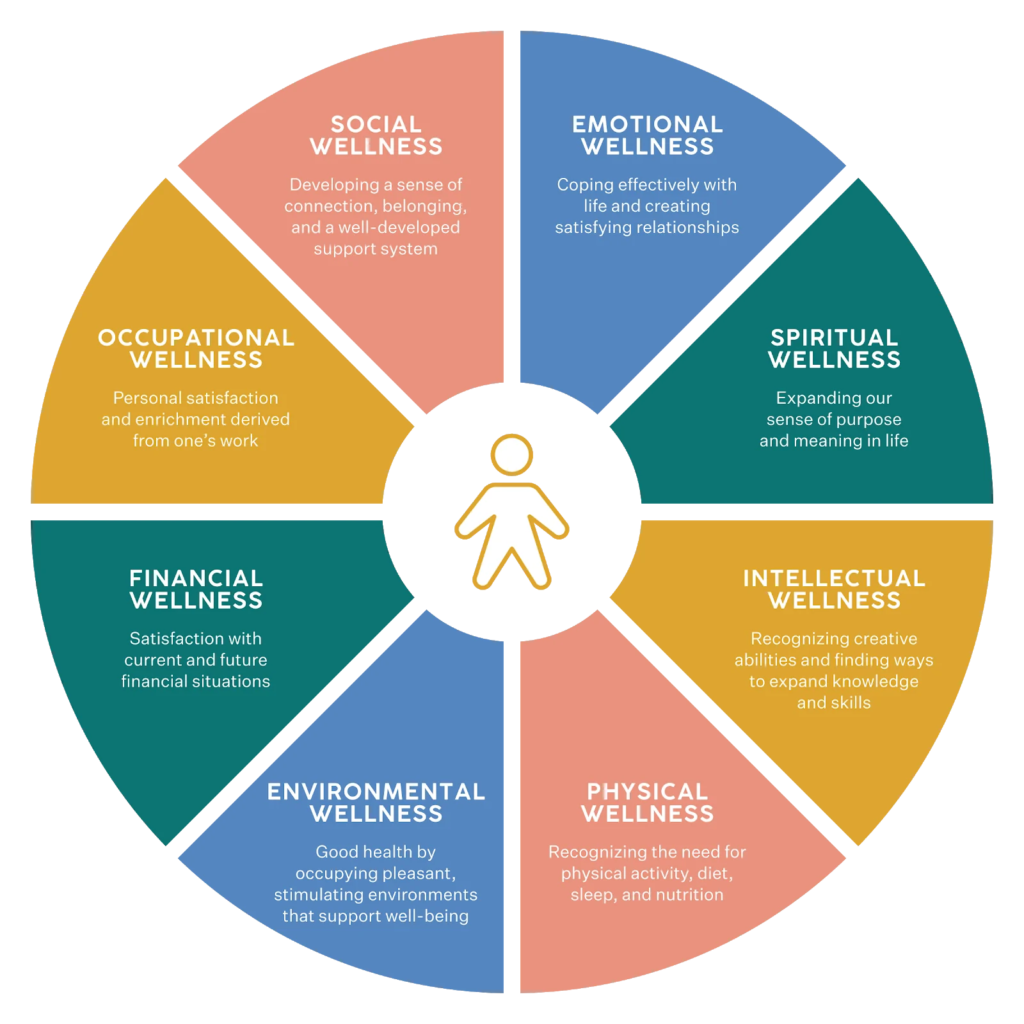As I started my research on how to measure wellness, I did what any Millennial living in 2024 would do…I asked ChatGPT.
I began with the very simple question, “How can I measure my wellness?” Very deep question, I know. The response I got was mostly a regurgitation of a lot of the things I was already aware of, such as:
- Track your daily steps
- Monitor your heart rate
- Keep a food diary
- Track your sleep
- Maintain a mood journal
- etc.
As a means of measuring these, the response suggested several specific, targeted apps for various tracking needs. You’ve likely heard of some of them: Garmin, Sleep Cycle, MyFitnessPal, and Headspace.
While of course I see the value of and have used several of these, they don’t quite hit the mark on what I’m hoping to achieve—the starting line that marks the beginning of my holistic wellness journey.
What did resonate with me were some suggestions ChatGPT made regarding comprehensive wellness assessments. Notably, it suggested the Wellness Wheel and the Perceived Wellness Survey.
Before doing this research, I hadn’t heard of either.
Measurement Method 1: The Wellness Wheel
The Wellness Wheel was initially a creation of Dr. Bill Hettler. In 1976 Hettler co-founded the National Wellness Institute, a non-profit organization. Their current definition of wellness is “functioning optimally within your current environment.
As you can see, wheel #1, the one created by Dr. Bill Hettler, has only 6 dimensions, while more modern wheels like wheel #2 found on Headspace’s website include also Financial and Environmental dimensions. Various representations of the wheel can be found. I personally love this more circular representation. Personally, I love the circular wheel representation. It feels whole and complete. Taking a note from the Ancient Greeks, it feels like “a symbol of the divine symmetry and balance in nature.” (nrich, University of Cambridge)


Enough about the actual wheel…on to how to use it!
The National Wellness Institute’s website offers a ton of downloadable resources that can help individuals in defining, assessing, and improving their wellness.
Meanwhile, other sites such as Headspace and the Remente app suggest that self assigning a score between 1-10 in each category and then reflecting is the best manner of measurement.
Measurement Method 2: The Perceived Wellness Survey (PWS)
In 1991, Troy Adams launched his journey to determine the best measurement of wellness. In a paper published in the American Journal of Health in 1997, Adams introduces the Perceived Wellness Survey (PWS). In the paper, it sites this wellness measure as “a conceptually congruent, empirically sound wellness measure which rests upon the philosophical foundation and which is supported by the theoretical framework.”
The paper is quite interesting, and you can find it on the Perceived Wellness website. From it, I learned that the term salutogenesis is defined by the World Health Organization (WHO) as “a complete physical, mental, and social wellbeing and not merely the absence of disease.” Seems like a great addition to my vocabulary!
This survey consists of 36 questions and asks about your wellness perceptions. You must select a score between 1-6 for each, where 1 is very strongly disagree and 6 is very strongly agree.
While this survey may help you get a better idea of yourself, it doesn’t necessarily give any advice on how to improve. Here, awareness is key, along with believing in your wellness. In the words of H.M. Tomlinson:
“We see the world not as it is, but as we are.”
What else?
In addition to these two methodologies, I also found a short online quiz from Princeton called the UMatter Wellness Self-Assessment. The format for this is answering 7 questions in each of 8 categories, where responses are Never, Rarely, Sometimes, or Usually.
This quiz is easy to access and get quick results. It is obviously tailored to Princeton students since some of the questions even include ‘Princeton’. For these questions, I just inserted whatever made more sense for me while keeping the question’s intent in tact.

What Next?
Now that I have become more aware of some options for measurement, I plan to fill these various models out. I’m interested to see the commonalities and differences between them for my current wellness. After looking at these assessments, I do feel like I will need to create another formatting option to track my results. (Likely something colorful and based in Excel. 😄)
Let’s keep striving well together!
